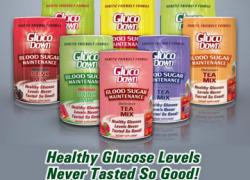Women: Not Every Infection Is A Yeast Infection
Potentially severe vaginal infections with symptoms similar to those of a yeast infection include bacterial vaginosis, a condition caused by abnormal bacterial growth in the vagina; and trichomoniasis, a parasitic infection. Both of these conditions require antibiotics from a doctor. Self-treating these conditions with a yeast medication may delay getting the right diagnosis and an effective treatment.
Fortunately, at-home tests can help women learn what to look for and determine whether their discomfort is indeed caused by a yeast infection or by something else that requires a doctor visit and prescription medication to resolve.
A vaginal health test kit is available over the counter at most pharmacies. The test measures the acidity of vaginal discharge using a hand-held detector with a tip resembling a cotton swab. The tip is designed to detect acidity, or pH, to help distinguish the type of infection that is present, and shows results in 10 seconds.
In the case of a typical yeast infection, the test kit swab will not change from its original yellow color, and you can likely treat yourself with an over-the-counter yeast infection medication.
However, if bacterial vaginosis or trichomoniasis is the source of the symptoms, the swab will change color to a blue or green, and the kit instructions strongly advise a visit to your doctor. Even in cases where there is a mixed infection caused by a combination of candida and bacterial vaginosis / trichomoniasis, the test will give a positive result and send the user to the doctor.
Other features that distinguish a yeast infection from a bacterial infection include:
- Smell. Bacterial vaginosis and trichomoniasis are usually accompanied by fishy, musty, or otherwise unpleasant odors, while yeast infections are usually odorless.
- Texture. The discharge associated with yeast infections is usually thick and white, while discharge from bacterial vaginosis is often thin and milky white or gray in color. By contrast, discharge in cases of trichomoniasis may be frothy and yellowish-green.
- Sting. Yeast infections usually involve an itching, burning, or stinging feeling, but these symptoms are not always present or as severe in cases of bacterial vaginosis or trichomoniasis.
The over-the-counter vaginal health tests available today are approved by the Food and Drug Administration and are the same as those used by doctors in their offices.
For more information about vaginal health and vaginal health tests, visit checkbeforeyoutreat.com

